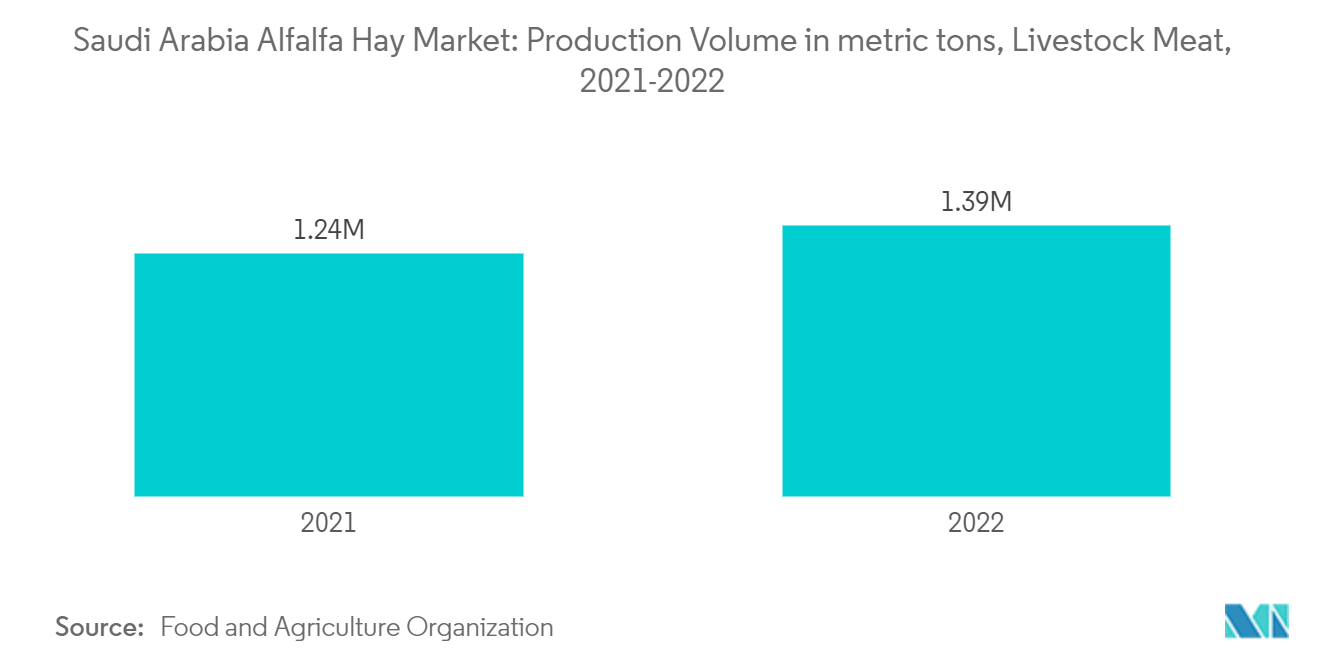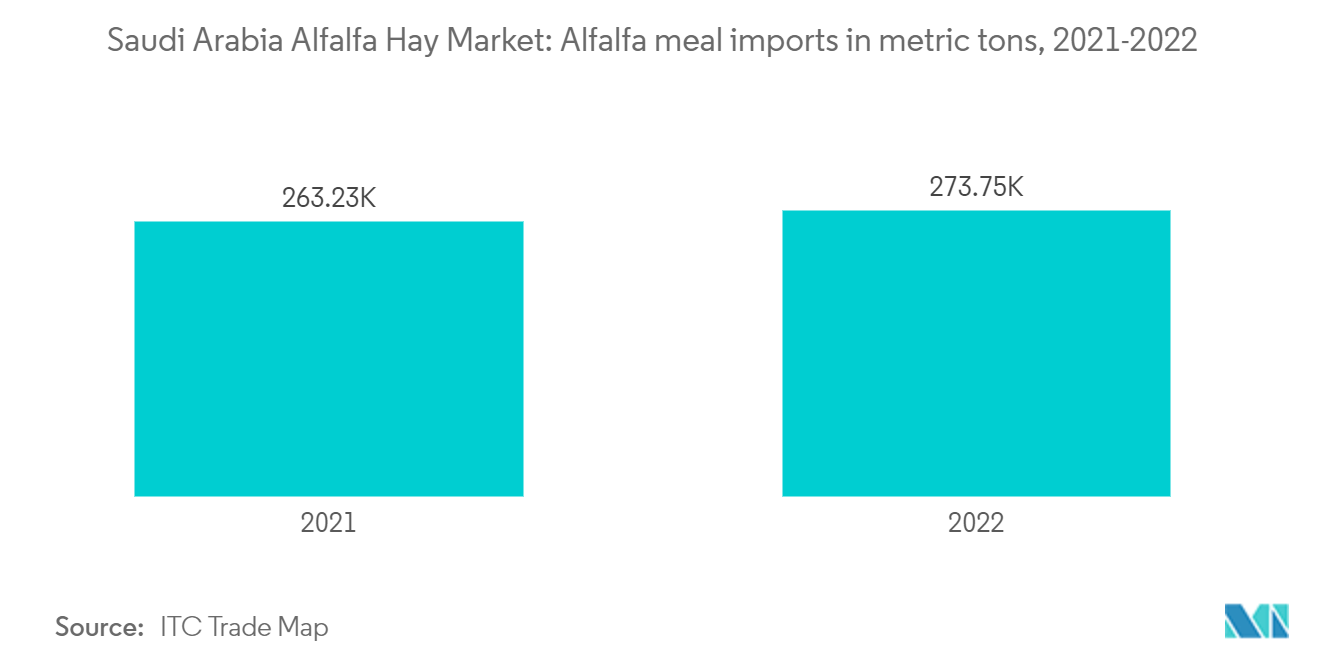Market Trends of Saudi Arabia Alfalfa Industry
Rising Demand for Quality Hay for Livestock and Dairy Production
Livestock products remain the desired food for nutritional value and taste across major parts of Saudi Arabia. Saudi farmers heavily rely on imported alfalfa hay to increase meat and dairy production. According to the Food and Agriculture Organization Corporate Statistical (FAOSTAT), the country's livestock population has risen over the past few years. The number of poultry bird stocks was 210,360 heads in 2022, up from 206,748 in 2021. Additionally, the rising demand has witnessed a significant increase in meat production. In 2022, poultry meat led the production with 1,130,095.6 metric tons, up from 930,221.9 metric tons in 2021, followed by sheep and goat meat at 153,596 metric tons.
Furthermore, according to the Ministry of Environment, Water, and Agriculture (MEWA), the Kingdom's domestic production reached a 60% self-sufficiency level in 2020. There are plans to collaborate with the private sector to increase that level to more than 85 percent by 2030. The government has also been actively working to remove obstacles for producers to acquire and use the land for poultry production, provide loans for equipment purchases, and reform its subsidy system for feed, livestock, and poultry. This is anticipated to increase poultry production, eventually creating demand for alfalfa hay.
Furthermore, processed red meats are consumed by emigrant communities and the food service sector in Saudi Arabia. The growing demand for meat and its inclusive of products, such as processed burgers and sausages, are anticipated to have a remarkable penetration across thefood servicee sector, prominently through the Quick service restaurant (QSR) segment.

Saudi Arabia's Ban on Forage Crop Cultivation Sparks Surge in Imports
Saudi Arabia's decision to phase out domestic forage production, aimed at conserving water resources, has spurred a surge in alfalfa hay imports. This policy shift underscores the nation's growing reliance on imported high-protein alfalfa hay to bolster its livestock and dairy industries. Quality hay is paramount for Saudi Arabia's livestock sector, especially in poultry and dairy production, influencing both nutritional value and taste. With the ban on cultivating green fodder, including alfalfa, the country has turned to imports to satisfy its livestock's nutritional demands.
The productivity of Almarai and other Saudi Arabian dairies relies on key dairy feeds, including high-quality alfalfa hay, corn silage, and miscellaneous forages. However, the continual depletion of aquifers in the Arabian Peninsula posed a huge challenge to the alfalfa hay manufacturers/providers, as the domestic production of alfalfa is constrained due to water limitations. The main reason for the significant reduction in the Kingdom’s forage production is concern over the depletion of the country’s groundwater.
Hence, Saudi Arabia's decision to phase out forage production will likely increase the demand for imported high-protein alfalfa hay shortly. For instance, the imports of alfalfa have increased significantly in recent years. According to the ITC Trade Map, in 2022, the total import value for alfalfa meals accounted for around USD 67.6 million, which increased from USD 56.4 million in 2020.


